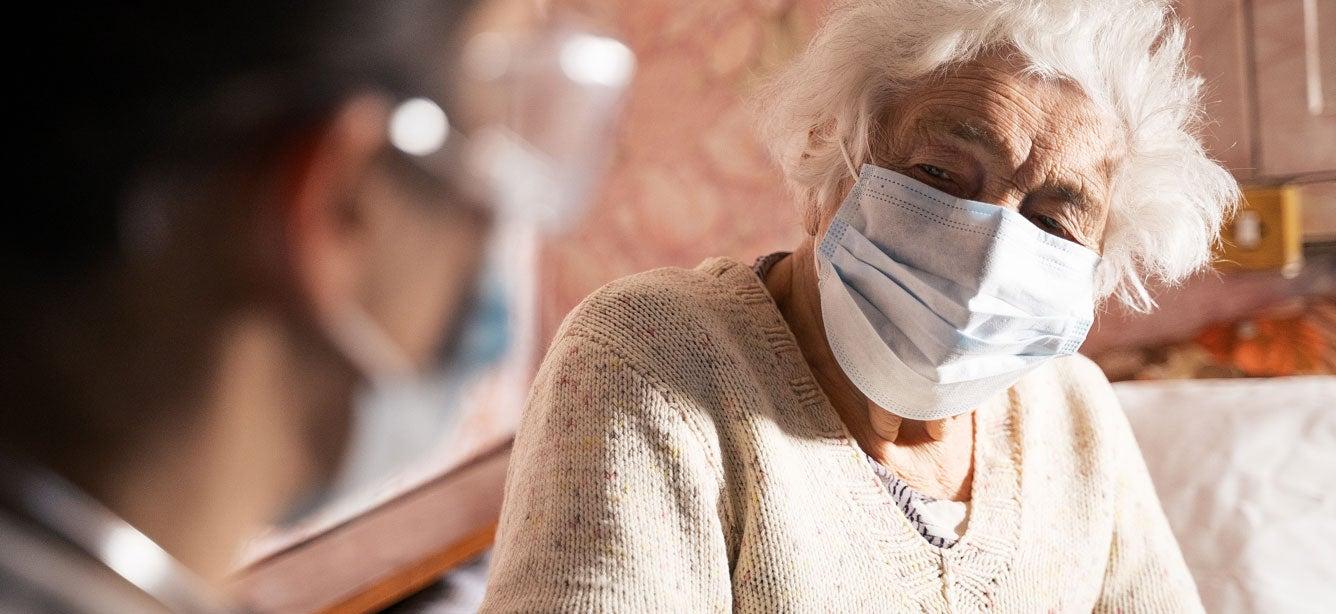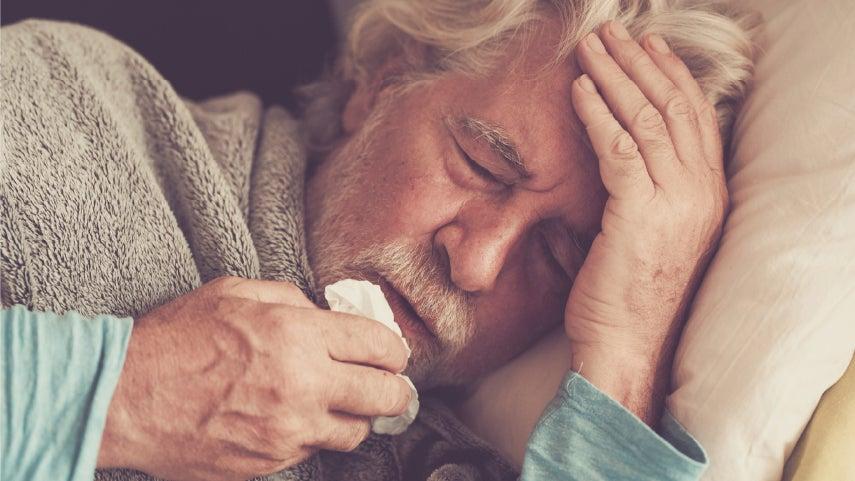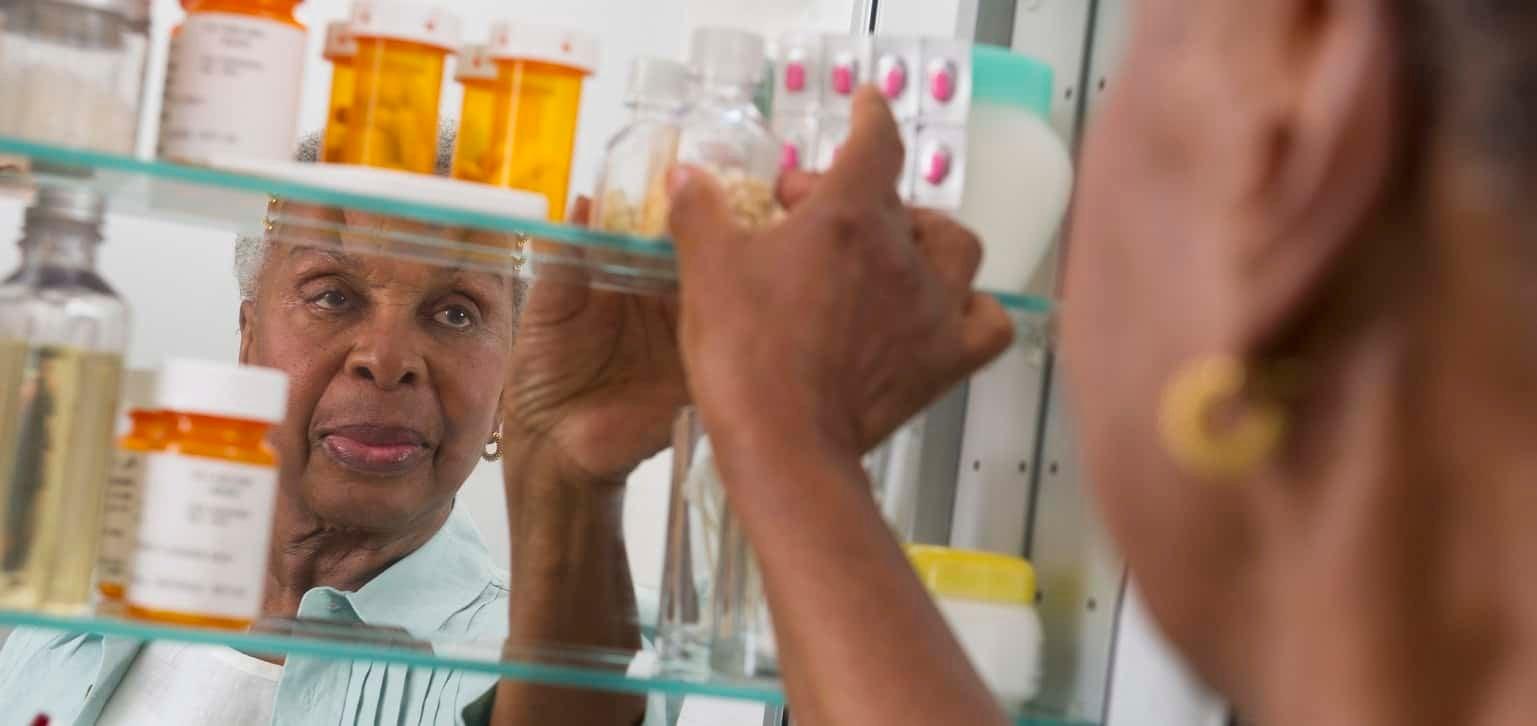
Related Topics
The role of community-based palliative care (CBPC) for supporting seriously ill people at home has never been more critical, with the COVID-19 pandemic disproportionately affecting the chronically ill and older adults. This vulnerable population faces a double risk, first from coronavirus and second from the effects of isolation on their physical and mental health.
While the overall mortality rate of COVID-19 is likely to hover around 1-2%, the mortality rate for people over 80 is 14.8% to 21.9%, for patients with cardiovascular disease 10% to 13.2 %, diabetes 7% to 9.2%, and pulmonary disease 6.3% to 8%.1 People 65 and older have consistently accounted for a larger share of COVID-19 deaths than those younger than 65, and represented 88% of all deaths in September 2022— the highest share since the pandemic began.2
To protect patients and clinical teams from potential exposure to the virus while maintaining commitments to seriously ill patients, many CBPC programs have needed to alter their care delivery methods.
Best practices: CBPC in action
Turn-Key Health (TKH), a CBPC organization serving health plans, is modeling best practices for provider organizations and their members who are experiencing a serious or advanced illness. TKH responded to the spread of COVID-19 in mid-March by pivoting their Palliative Illness ManagementTM (PIM) home-based model to emphasize the use of telephones and digital video and meeting tools. TKH’s standardized processes and assessments, documentation platform, and clinical oversight enabled adaptation of their model in less than 24 hours for all partners, minimizing the need to visit patients in their homes. Patients with special or urgent needs continue to receive home visits from the programs’ nurses and social workers as needed.
These nurses and social workers also lead the way on outreach, contacting patients each week who live alone or have risk factors such as cardiac or pulmonary disease.
During these calls, they review the CDC guidelines on handwashing and remind all patients of the importance of maintaining social distancing. The team also provides specific instructions about what to do if they or their caregiver becomes ill. These wellness calls cover other ground, offering the opportunity for TKH staff to help patients access food, medication, household goods, and information about organizations that deliver food and supplies. They also take action to ensure patients have prescription refills and access to medication delivery.
Providing a personal connection
At a time when so much attention is given to the urgency of the COVID-19 pandemic, TKH palliative care teams are not losing sight of chronic disease management. During calls to patients and their caregivers, the PIM nurses evaluate new symptoms and provide education and support to make certain that patients are managing their diabetes, hypertension, heart failure, and pulmonary disease. Doing so mitigates negative health effects and prevents emergency room visits.
These calls and telehealth visits by the PIM clinicians also provide a personal connection that is greatly needed to help combat social isolation, especially for those living alone.
Additionally, they allow the nurses and social workers to continually assess for signs of depression, anxiety or mental status changes such as confusion. The team monitors for changes in the patient’s mobility or ability to care for themself that place them at risk for falls or self-neglect, and they refer to community-based services to bolster supports as needed.
PIM teams also engage patients in the important task of COVID-19-specific advance care planning. They use specially developed communication and decision support tools to initiate these conversations, which proactively address concerns and clarify the patient’s and family’s goals if the patient becomes ill.
TKH’s clinical operations team meets regularly to review the current COVID-19 situation and changes to regulations to identify if any additional modifications are needed and provide timely updates to their partners. TKH developed a real-time dashboard to monitor COVID-19-related patient outreach activity and examine any impact on clinical KPIs so that concerns are promptly addressed.
Real patient stories from the palliative care front lines
Patient stories based on real-world situations illustrate the unique challenges of COVID-19 for seriously ill persons at home and the ways in which CBPC programs provide much needed care and support.
Patient # 1 —Carl Thomas is a 61-year-old with COPD and lung cancer who lives alone. During a phone visit by the PIM nurse he disclosed that he was feeling fatigued, mildly short of breath, and had a moderate cough and pain. His breathing sounded congested over the phone, but he did not have a fever. The nurse reviewed COVID-19 signs and symptoms, including a fever over 100.4, dry cough, sore throat, muscle and joint pain, and difficulty breathing. The nurse instructed Thomas to check his temperature every four hours and call if a fever or any distressing symptoms developed. The nurse continued to check on him daily. By the third day, his condition was not significantly better. After consultation with his primary care provider, Thomas went to a walk-in clinic and received Doxycycline for a non-COVID-19 upper respiratory infection. His cough and congestion improved with the antibiotic, and his PIM nurse continues to monitor him weekly.
Patient #2 —Agnes Taylor is a 69-year-old with amyotrophic lateral sclerosis (ALS), a progressive motor neuron disease. She receives weekly calls from her PIM team to monitor her fragile health status and make sure she has support during COVID-19 lockdown because she lives alone. Taylor relies on daily Meals on Wheels, but deliveries were stopped during the crisis. Her PIM social worker arranged a family meeting over the phone with Taylor and with her estranged family to request support to obtain groceries and meal delivery. During the call, her grandson agreed to pick up groceries and drop off food. The clinician reviewed COVID-19 signs and symptoms, including a fever over 100.4, dry cough, sore throat, muscle and joint pain, and difficulty breathing, and encouraged her to practice social distancing and proper hand hygiene during food drop offs.
Patient #3—Renee Bartley is a 76-year-old who lives alone. She has diabetes with multiple complications including lower leg amputation. She receives assistance from a program that places caregivers in the home for several hours a week. Although she is grateful for this support, she was very concerned and anxious that her caregiver was not following proper hand hygiene. In addition, she was afraid to venture out of the home for groceries and medicine. Her PIM nurse provided tips on ways that Bartley could talk with the in-home care provider about hand hygiene. Ultimately, at the request of Bartley and after conferring with the PIM nurse, the company replaced the care provider with someone who Mrs. Bartley was more comfortable with. The PIM clinician also arranged for her to obtain free home delivery of her medications and identified a neighbor who agreed to deliver groceries. Her PIM nurse continues to monitor Bartley weekly.
The COVID-19 pandemic places those with advanced or serious illness at great risk, resulting in the need for closer monitoring at a time when regular home visits are not possible. Organizations like Turn-Key Health have successfully altered their care models to expertly assess high risk patients and provide much needed COVID-19-specific education and social connection, while ensuring they have food, medication and other needed assistance.
Other organizations should look to others in their fields to find resources, best practices, and tools to fulfill commitments to patients, approaching each person prepared to help with short-, medium-, and long-term needs, whether related to COVID-19 or not. Learn more about Turn-Key Health.
Sources
1. Zunyou Wu and Jennifer M. McGoogan. Characteristics of and Important Lessons From the Coronavirus Disease Outbreak in China. JAMA Network. Feb. 24, 2020. Found on the internet at https://jamanetwork.com/journals/jama/fullarticle/2762130
2. Kaiser Family Foundation. Deaths Due to COVID-19 Among Older Adults Jumped During the Summer of 2022 Before Falling Somewhat in September. Oct. 6, 2022. Found on the internet at https://www.kff.org/coronavirus-covid-19/issue-brief/deaths-among-older-adults-due-to-covid-19-jumped-during-the-summer-of-2022-before-falling-somewhat-in-september/



